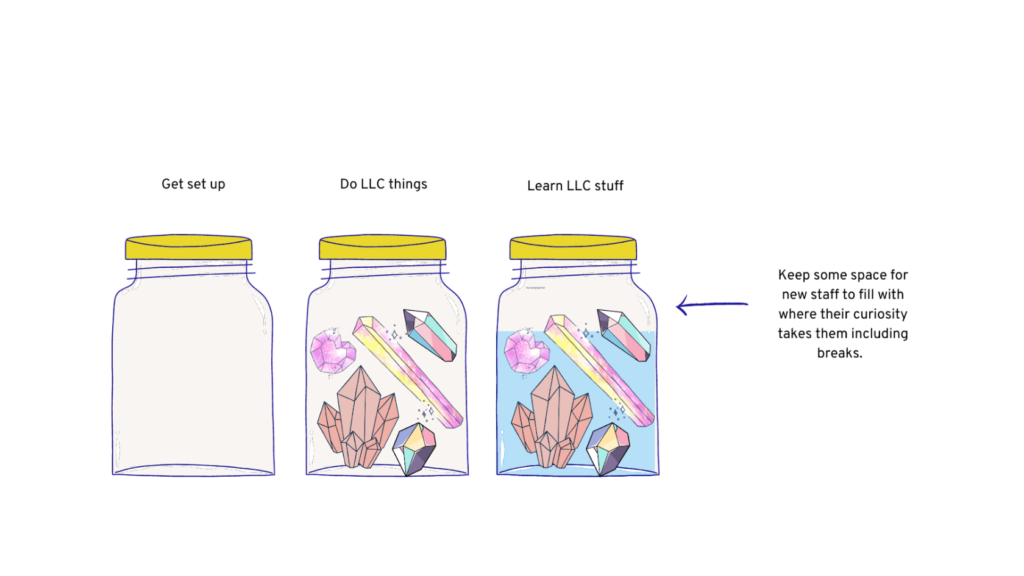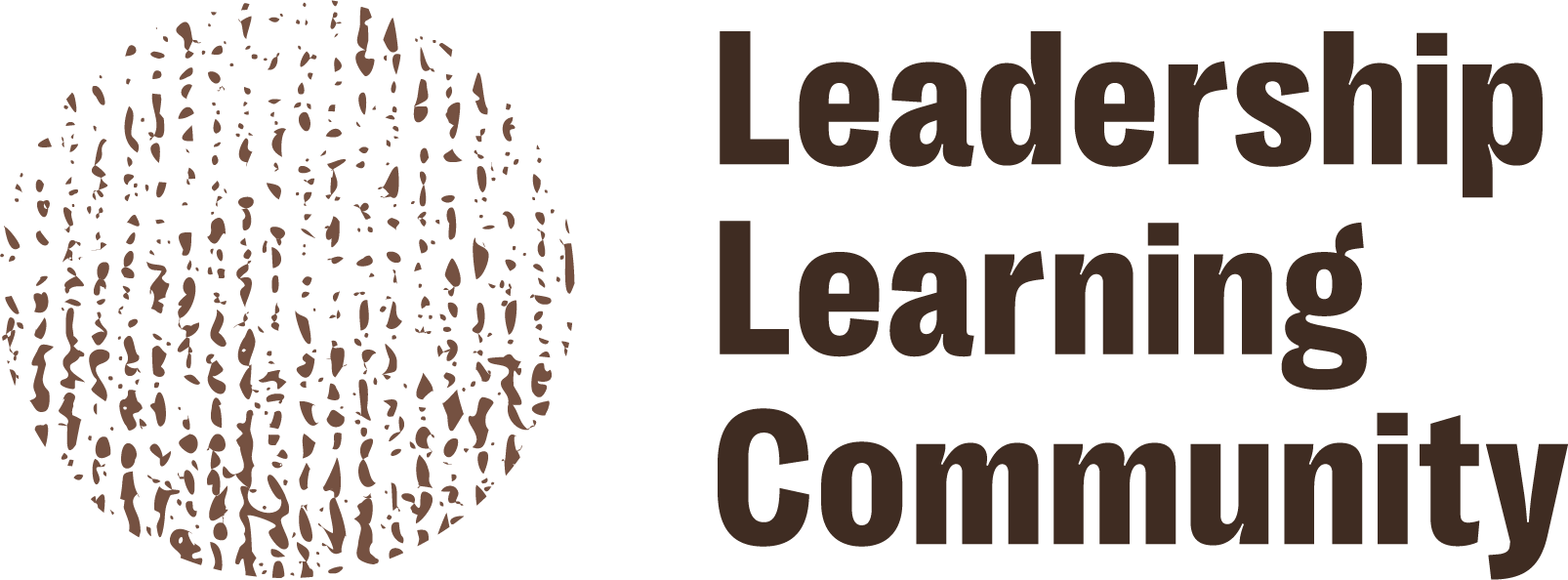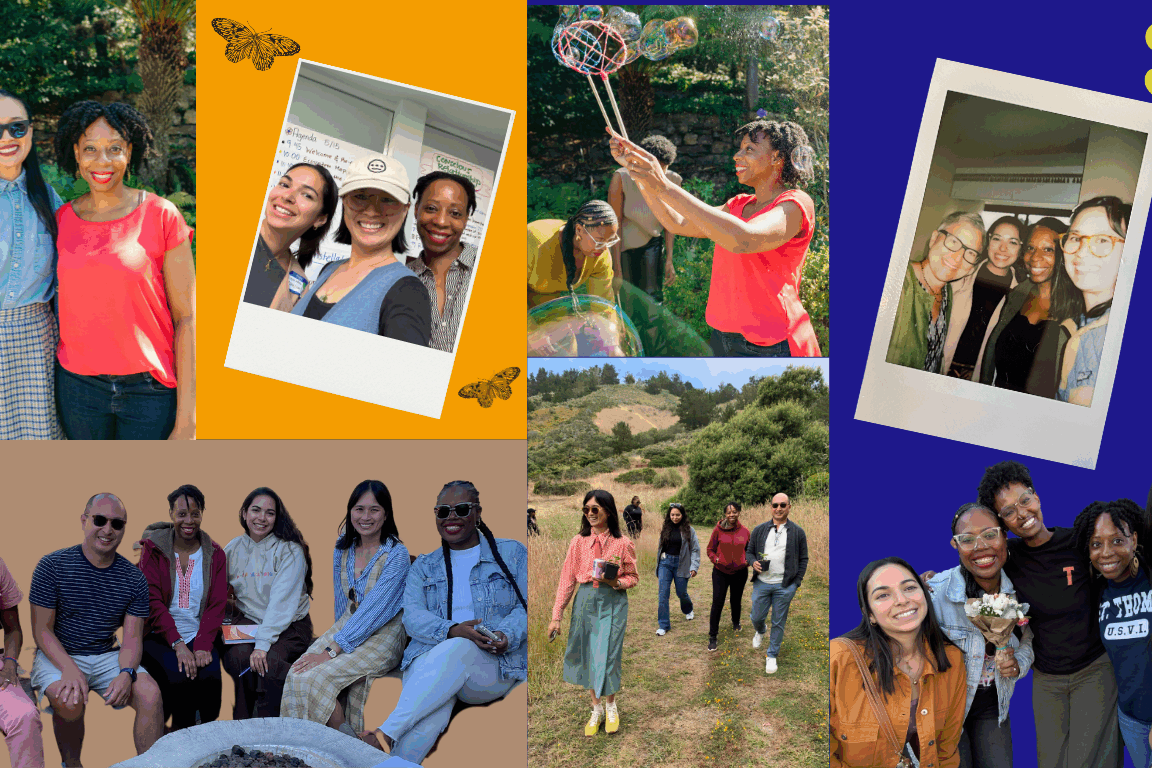Establishing new liberatory approaches involves a certain degree of risk. You have to put aside the “proven” way of doing things and try on new or revive older ways of doing things. Whether you are inventing or recycling, your approach will be different from the current white-dominant norm. Consequently, the track record for these efforts either may not exist or may have been obscured or erased. Knowing this, LLC adopted a learning stance in our approach to staff recruitment.
We applied the best of our knowledge about liberatory leadership, ethical and equitable HR, and other models, which allow us to do just work in just ways to develop our recruitment strategy. We also invited applicants to share their thoughts about what would make our recruitment processes more liberatory. We had no idea what kind of responses we would get or if people would appreciate and understand our intentions in asking the question. We’re happy to report that in every single case, without exception, the feedback we received was in line with the spirit of the question: generous, thoughtful, and generative. If you contributed to this body of knowledge, thank you.
In this series, we will share how we conducted our most recent hiring process, how we applied a liberatory lens, what went well, some things we got wrong, and what we learned from the full experience. In these blog posts, the hiring process is broken down into four components: Application Process, Interview & Screening Process, Decision-Making & Offers, and Onboarding. The section below covers Decision-Making, Offer, and Onboarding. (Click here for Application Process, Interview & Screening Processes)
Decision-Making & Offer Processes
As we began to conclude the hiring process and shifted to decision-making, we wanted to continue to center the humanity of the candidates. We also balanced the inherent risk of bringing on someone who is not a good fit for the role and team. There are plenty of statistics that share that a bad hiring decision has cost implications starting at 30 percent of the individual’s first-year expected earnings. What our team already knew without those figures was that for a small team and nonprofit, we had very little apparent risk tolerance to start with, so we needed to get cozy with our fears and true risk-taking ability. In the section below, we’ll describe how we explored our feelings about change, surfacing opportunities, and moving through fear of change. We’ll also share what LLC did in the hope of setting the pre-existing team members and new staff up for success.
- Multiple Ways of Knowing: Rather than relying on just one way to interpret and process what we were learning about each candidate, we instead recognized that there are many ways of knowing and understanding. We conducted individual “gut checks” and reflections, collective bias checks, and utilized a screening rubric that outlined the skills, capacities, and approaches we were eager for new hires to add. We also asked ourselves: “Are we seeing inequitable or non-liberatory patterns? Do we see white supremacy ways of being playing out?”
- Surface Key Questions and Concerns: LLC is a small team with four full-time staff and one part-time staff member, so adding two people at once was a significant change. We talked about the impact of hiring on our culture and invited staff to surface their hopes and fears, asking ourselves, “What are we hoping for?” and “What are we afraid of?” We also talked about how to prevent and deal with the problems we feared. We learned that we were hoping for additional staff capacity, new energy, and broadened perspective, and we feared losing our happy and productive work culture. By having explicit conversations, we were able to set ourselves up for success and mitigate risks.
- Prepare for Success and Mitigate Risks:
-
- Clarify: We reassessed how we had described LLC as an organization and each role with candidates and identified areas for additional clarity. In this way, we hoped that the LLC Team and the candidates would truly understand the conditions and expectations, enabling us to make deeply informed decisions.
- Reference Checks: After we decided on finalists, we conducted robust reference checks (described in more detail in Part 1). The questions utilized in the reference check conversations were directly aligned with our hopes and concerns. We inquired about each candidate’s track record exercising the skills and values-aligned engagement we sought and checked for evidence of the risks we were attempting to mitigate.
- Sample questions for reference checks:
- What are the candidate’s greatest strengths? What parts of the job do you think the candidate would be most successful at?
- If you had to pick out a component of the job where you think the candidate might not be as strong or may need some development, what would those be?
- What reservations, if any, would you have about the candidate for this position?
- What kind of work environment do you think would best help this candidate thrive here?
- Sample questions for reference checks:
- Dealing with “What if”: Instead of hiding our fears, we acknowledged and thought through how we might react in a “worst case scenario.” Our plan included identifying mediation and generative conflict resources, as well as solidifying our relationship termination policies and ensuring that those policies aligned with our values. This proactive planning allowed us to focus on opportunities with confidence, knowing that we had risks covered.
- Building Towards Mutuality: We talked about how we invited new people into LLC’s culture and how LLC culture could be elastic enough to change in response to new people without losing the core of what makes us great. We incorporated this thinking into the initial onboarding design, which we refined after we made offers and they were accepted. One concrete example: We didn’t simply assess candidates to see if they were “ready” for us. We also ensured that we were “ready” for them. For example, we offered refresher supervision training for one of our direct supervisors prior to the new hire since the supervisor had not had staff supervision responsibilities while at LLC.
- Conscientious Onboarding: We incorporated these concerns into the onboarding process as we believed that setting new staff up for success is, in and of itself, a risk mitigation strategy.
-
- The Offer: We already know this: Black women, women of color, and many other demographics do not make as much as white men in America, and a lot of it has to do with the initial offer. If there are courses that teach women of color how to negotiate to get fairer salaries and benefits, then that’s enough of a sign for us as employers to do better. And yet, despite the best liberatory efforts, deciding on a salary offer is still rife with power, egos, problems, and many unclear factors. We are eager to continue learning more on this topic, and for some of us, determining compensation felt like assigning a monetary worth to a person, their skills and capacities, and their labor. For others, it was about living wages, pay parity, LLC’s pay history for similar roles, balancing our books, and industry norms. To put an objective decision filter on offers we would make, we reviewed our salary bands and budgets, looked at our complete compensation package, considered grant proposals that these roles would be funded by, gave space for individual circumstances, and assessed the market-rate for similar jobs (Now that states like New York and California require salary bands to be listed as part of a job posting, we had a plethora of current data to work off of). We had an offer conversation with each candidate and made good-faith efforts to meet them where we could. And it still felt incomplete. What is helping is we committed to reassessing in six months to see if compensation needs to be adjusted.
- Other approaches and resources: There are many ways to do this well and better. LLC is inspired by Ananda Valenzuela, RVC, and their work with Vega Mala to continue to explore different ways to structure compensation and more abundant ways to approach operations. We’re also interested in healing our money trauma as individuals and as an organization.
Onboarding
Onboarding new team members was intentional, and perhaps the planning part of it gave our preexisting team a chance to reflect and make space for a new team to arise with new hires. The onboarding process includes research, reflections, and design from the existing team, as well as a roadmap to getting set up, learning, doing, and reflecting for the new team members.
- Research, Reflections, and Design: The first part of the onboarding process for us was to unlearn and learn from previous experiences and default best practices. We reviewed LLC’s most recent onboarding processes, assessed our own onboarding experiences, and researched best practices in the field. Based on what we learned, we set intentions that guided our design of a 2023 general new staff onboarding plan, and individualized those plans for each staff member.
- Resources we looked at include:
- https://www.managementcenter.org/resources/new-hire-onboarding-agenda-for-manager/
- https://www.talmundo.com/blog/the-employee-onboarding-guide-15-steps-for-an-amazing-first-week
- https://www.getkisi.com/blog/5-steps-improve-onboarding-process
- https://www.shrm.org/foundation/ourwork/initiatives/resources-from-past-initiatives/Documents/Onboarding%20New%20Employees.pdf
- https://www.slideshare.net/danapapke/10-nboarding-for-non-profits
- Intentions we set for the onboarding process:
- Clearly share LLC’s work so it feels less squishy
- New staff feel like they are at work and have direction immediately – concretizing the first two weeks, and goals for the first 90 days.
- Relationships start forming with new and current staff
- Relationships start forming with greater LLC community (e.g. welcome blog)
- Make space for dissonance in the conversation
- Celebrate new team formation
- Resources we looked at include:
Onboarding components: The four components of our onboarding process include getting set up, doing and trying on work, learning by reading and watching, and reflection and fallow space.

1.Getting set up: Logistics, Remote Set up Generally (Before start + first week)
- Creating and sharing logins to LLC workplace systems
- Connecting new staff with the HR team
- Setting up two 1:1 meet and greet meetings with new staff and all current staff within the first 90 days.
- Ordering workspace equipment (LLC is fully remote)
- Sharing intentions and goals for onboarding via a welcome email
- Sending a welcome package.
- Providing a concrete schedule for the first two weeks + goals for the first 90 days.
2.Doing: Orientation and work in the first two weeks and 90 days
- A formal introduction of new staff to staff, board, allies, and other stakeholders
- Engaging in self-assessment and sharing. We use several tools like Welcome to My Brain Gifts and StrengthsFinder to allow staff to share their work styles, communication styles, and workplace needs with the team. Another example of such a tool is a Me Manual template borrowed from Social Insights. Here’s a similar tool: https://www.manualof.me/.
- Creating actionable workplans.
- Setting up regular Supervisor Check-ins
- Introduction to each of LLC’s work areas by circle leads (e.g. Strategy/Learning, Liberatory Operations, Liberatory Programs, Communications)
3.Learning: Orienting to LLC through watching webinars and reading articles/blogs
- LLC History & Origin Story
- LLC’s Learning Framework
- LLC’s governance and organizational structure
- An introduction to the tools and apps we use as a fully remote organization.
- Background info & relevant material and documents: Articles, Videos,Templates
4. Reflection and Fallow
- We expect downtime when onboarding. We also expect that within a year in, staff are usually trying to take work off their plate, and not adding more. We named this slow ramp-up and encouraged our new team members to take it slow.
- We also ask our new team members, “What else was helpful to do or read/watch in the first 90 days?” Other questions asked:
- What’s interesting?
- What are your learnings?
- What are your questions?
- What works well?
- What is asking for attention?
Lastly, we set up a time for new staff to meet with Ericka and Nikki at least once a quarter in an unstructured meeting to ask questions, share reflections and ideas, and get to know each other.
What’s next? We have more to the story to share: learnings from our new team members, Sadia and Alex, as well as a summary tool of our recruitment process.




